Today’s work environment demands finding the right way to train people. Traditional training methods often fail to capture attention, are quickly forgotten, and don’t address everyone’s needs.
This is a common challenge! The question I often hear is, “What is the best way to train employees? How do you keep them engaged?”
This is where interactive eLearning comes in. It makes learning fun and engaging.
However, interactive learning is a broader term. You need to understand its types to know which elements will fit your training needs. Keeping these common challenges in mind, I have created this blog post to provide examples and show you the best tools to create engaging training materials.
What Is Interactive eLearning?
Interactive eLearning is a way of learning that uses digital tools to create an engaging and learner-centered experience.
It goes beyond static content like text and presentations and instead uses activities like simulations, branching scenarios, and games to motivate learners to participate in the learning process.
This can help learners retain information better and develop critical thinking skills.
Types and Examples of Interactive Online Learning
In my organization, we view interactive content as crucial for active learning. It transforms participants into engaged learners and enhances knowledge retention and skill development.
We leverage different types of interactive online learning content, and I have shared the list below:
1. Quizzes and Assessments
- What it is: Question-based activities that test learners’ knowledge and understanding of the presented material. Formats can include multiple-choice, true/false, matching, or open-ended questions.
- When to use: Regularly throughout training to gauge learner comprehension, identify knowledge gaps, and reinforce key concepts.
- Why to use: Provides immediate feedback, allowing learners to self-assess and adjust their learning approach.
- How to use: Embed quizzes at the end of modules, after key points, or create a cumulative final assessment. Offer clear, concise feedback with explanations for incorrect answers.
2. Scenario-Based Learning

- What it is: Presents learners with realistic situations related to the training topic. Learners make choices and experience the consequences, fostering critical thinking and decision-making skills.
- When to use: This is ideal for practicing soft skills like communication, customer service, or conflict resolution. Applicable for complex procedures with multiple decision points.
- Why to use: Provides a safe space to experiment and learn from mistakes without real-world repercussions.
- How to use: Develop branching scenarios with realistic choices and outcomes. Offer feedback based on the learner’s decisions and provide opportunities to replay and explore different options.
3. Simulations

- What it is: In-depth, immersive experiences that replicate real-world situations or tasks. Learners interact with a simulated environment, applying their knowledge and skills to solve problems.
- When to use: When training for high-stakes situations with potentially serious consequences, like operating machinery or handling emergencies.
- Why to use: Provides a realistic and safe environment for practicing complex skills and procedures.
- How to use: Develop simulations that mirror real-world scenarios with high fidelity. Offer clear instructions, performance metrics, and opportunities for debriefing after the simulation.
4. Gamification

- What it is: Applying game mechanics like points, badges, leaderboards, and challenges to training content.
- When to use: To make learning more engaging and motivating, particularly for millennials and Gen Z learners.
- Why to use: Encourages healthy competition, promotes knowledge retention, and unlocks a sense of accomplishment.
- How to use: Incorporate game elements organically into the training content. Ensure the game mechanics align with the learning objectives and avoid overshadowing the core educational content.
5. Branching Videos
- What it is: Interactive videos where learners can choose their path through the narrative based on decisions they make.
- When to use: To present complex topics in an engaging way, allowing learners to explore different perspectives and scenarios.
- Why to use: Provides a personalized learning experience and caters to different learning styles.
- How to use: Develop a clear narrative with decision points at key moments. Offer choices that lead to different segments of the video, ensuring all paths reinforce the learning objectives.
6. Drag-and-Drop Activities
- What it is: Interactive exercises where learners move elements on the screen to organize information, solve problems, or build something.
- When to use: To introduce new concepts, categorize information, or build mental models.
- Why to use: Provides a hands-on learning experience that reinforces understanding through active participation.
- How to use: Design drag-and-drop activities that require manipulating information in a meaningful way to achieve a specific learning goal. Provide immediate feedback on whether the placement is correct.
You can create a more engaging and compelling interactive eLearning course by strategically incorporating these interactive elements. This will lead to improved knowledge retention, skill development, and overall training outcomes.
Advantages of Interactive eLearning
Statistics show that 45% of workers are more likely to stay in their role if they receive training, and over 90% of employees say they won’t quit if they get development opportunities.
From my experience, interactive eLearning has proven to be a game-changer.
If you’re wondering about its effectiveness, I can confidently affirm that it is indeed impactful.
Here’s how?
Boosts Motivation: The introduction of interactive elements like simulations and quizzes into our training programs led to a significant boost in learner engagement and motivation. We observed a remarkable increase in enthusiasm and a deeper exploration of the material among learners.
Enhances Knowledge Retention: The transition to interactive eLearning also resulted in enhanced knowledge retention. The active participation of learners meant that the information was more likely to be remembered, especially when compared to passive methods like reading or lectures.
Caters to Different Learning Styles: Another notable benefit was the personalization aspect. The eLearning platforms we use to cater to various learning styles grant learners the autonomy to progress at their own pace and concentrate on areas where they need more practice.
Collects Actionable Feedback: Moreover, the instant feedback provided by interactive eLearning tools was instrumental. It allowed learners to recognize and address their weaknesses.
Promotes Collaborative Learning: The emphasis on collaboration in our interactive courses improved communication skills and introduced diverse viewpoints into the learning journey.
As you can see, we have got plenty of benefits from incorporating interactive elements. In fact, many other organizations have also benefited from the same.
For example, IQC Security & Loss Prevention Consultancy in France found a great solution with ProProfs Training Maker. They needed to make training programs that fit exactly what different clients wanted. Earlier, it was hard for them to find a tool that would let them do this. However, with ProProfs Training Maker, they could easily add online quizzes and data that are accessible to users without specialized expertise. This change helped IQC a lot. They started to see more customers from all over the world and made more money.
7 Best Interactive eLearning Tools
As I said, we have been using various eLearning tools to create interactive and engaging content. I have placed ProProfs Training Maker on the top because it’s our go-to solution.
However, we have also tried other interactive eLearning tools that cater to our training needs.
So, here are the seven best tools that you can try for your business as well.
1. ProProfs Training Maker
ProProfs Training Maker excels in creating interactive content. This platform offers a wide range of features that support the development of engaging eLearning materials. It offers an easy-to-use course builder, complete with an intuitive authoring tool and professional templates, making it simple to design custom courses.
Users can enhance their courses by uploading various multimedia elements, such as PowerPoint presentations, images, podcasts, videos, and PDFs, thereby converting existing training materials into engaging online courses. ProProfs Training Maker also includes quizzes and assessments to test knowledge retention.
The platform increases interactivity through additional features like brain games, which improve cognitive skills, shared folders for easy access to resources, a white-label option for branding, a vast library of ready-to-use courses, and tools to manage learners through designated learning paths and online classrooms.
2. 360 Learning
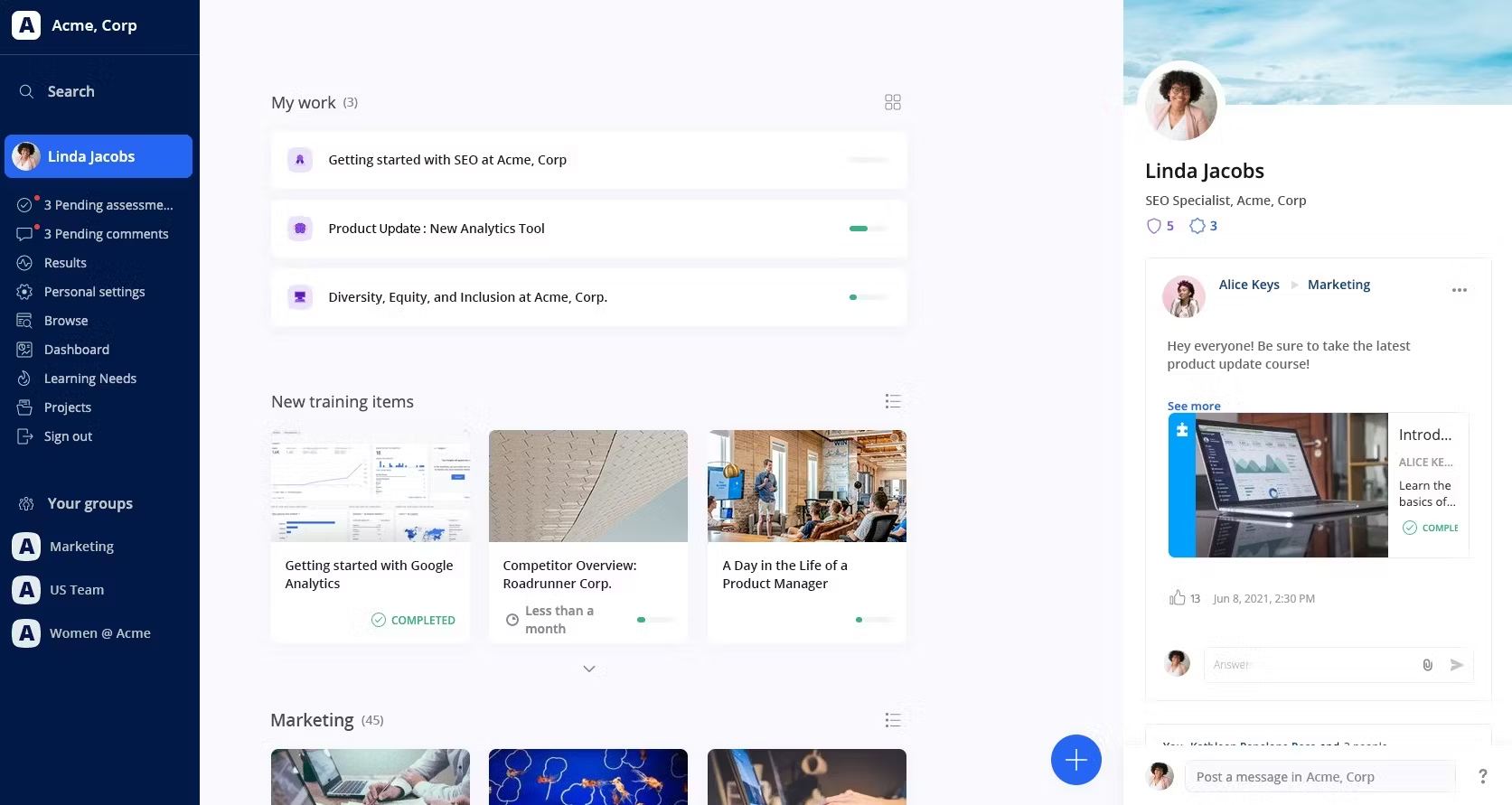
My organization chose 360Learning because it lets us create courses together. This feature fits perfectly with our goal to work as a team and use our trainers and experts’ knowledge. Having many contributors work on a course at the same time makes our content accurate and full of different perspectives.
This way of working together has changed how we make our training programs. It lets us get feedback and make changes quickly, which makes creating courses faster and more effective. Every contributor adds their unique ideas and knowledge, making the learning material richer and covering all essential points.
Also, this feature has made our courses much more relevant. By including experts from different areas in the course-making, we make sure our content stays current with the latest trends and practices in the industry. Keeping our content relevant is vital to giving our learners valuable and practical knowledge.
3. EdApp
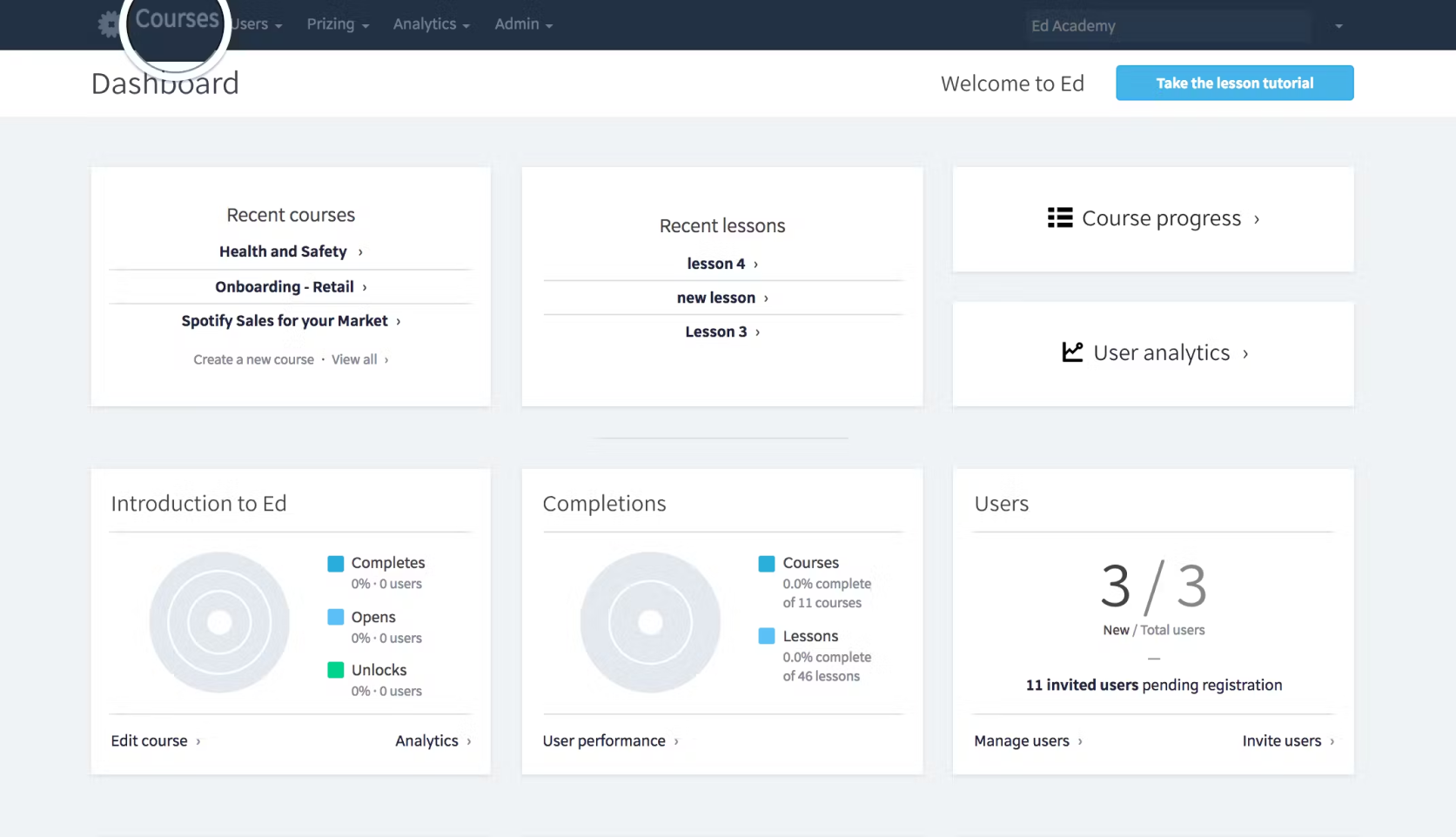
EdApp serves as an all-in-one interactive eLearning tool that allows you to create courses, monitor performance, reward top performers, store certificates, and more. It also offers access to a course library featuring over 800 interactive courses on topics such as retail, safety, leadership, and sales. Thanks to EdApp’s cross-platform functionality, you can access high-quality, responsive training on mobile devices and computers.
Learners can engage with courses through interactive actions like drag-and-drop, scratch-to-reveal, and slide-to-compare, enhancing their ability to retain key concepts and information.
EdApp incorporates gamification into its courses and templates, making learning fun, engaging, and memorable. The platform’s Rapid Refresh feature, a built-in quiz maker, allows for the instant delivery of quizzes following any learning activity. Simply populate a spreadsheet with your questions and answers, and EdApp handles the rest.
4. domiKnow

My organization recently adopted domiKnow, an all-encompassing cloud-based eLearning LMS that integrates an eLearning authoring tool with a content management system. This web-based software has served various organizations, both small and large, for over a decade, addressing their training and collaboration requirements effectively.
It enables our team to work together in real-time. We can design interactive content across any device and leverage a wide array of templates and digital assets.
An outstanding feature of domiKnow that we particularly appreciate is its translation and localization function. It offers the option to translate learning content into more than 50 languages, making it incredibly useful for tailoring content to learners in specific regions.
5. Genially
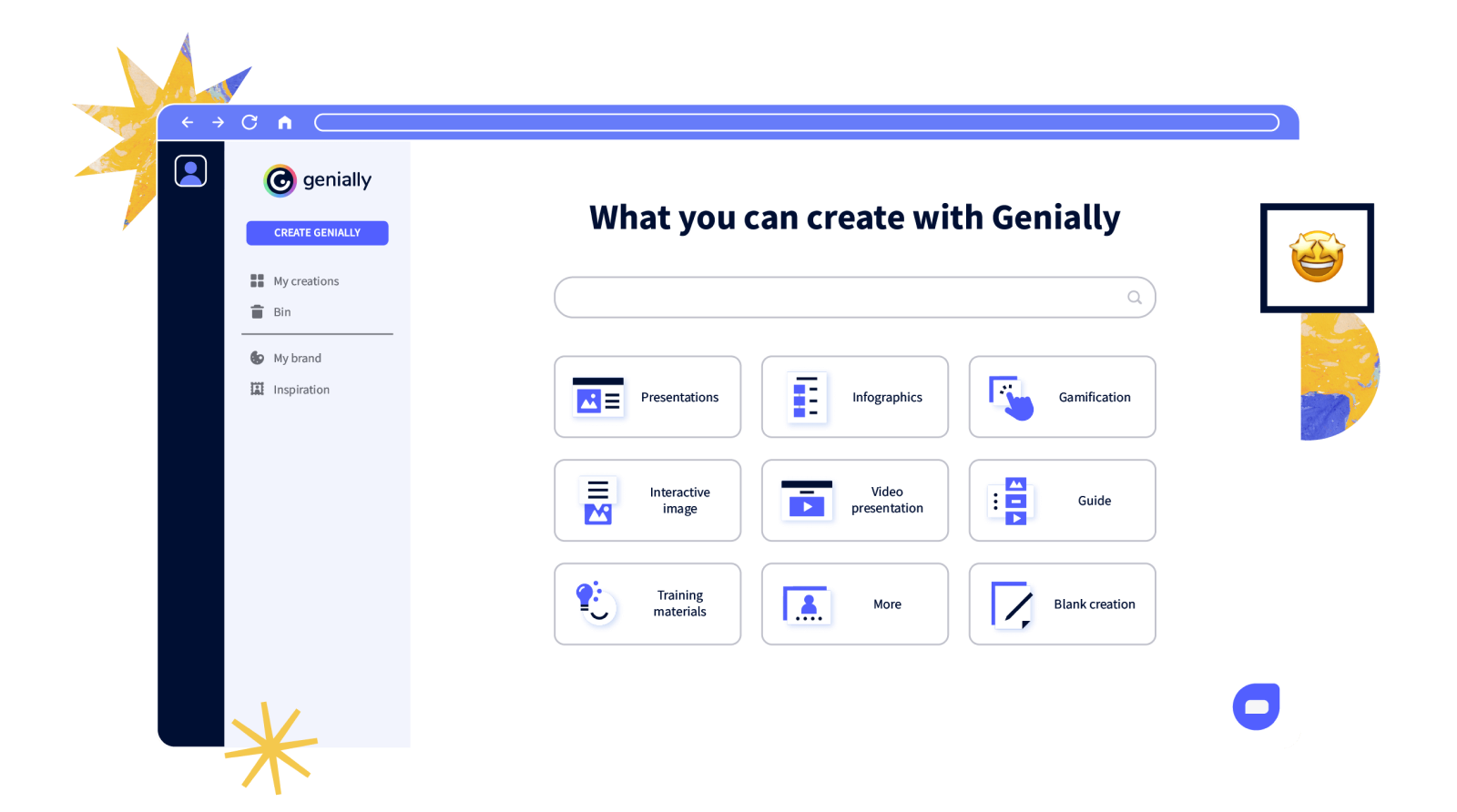
We started using Genially because it helps us create interactive content like presentations, infographics, and even interactive images. What drew us to it were the templates and resources they offer, which are incredibly user-friendly and designed with educators in mind. This tool has made our design process much quicker and more efficient.
From my perspective, one of the best things about Genially is its interactive scenario branching tool. This feature has been a game-changer for our Learning & Development (L&D) team. It makes eLearning courses much more engaging by allowing learners to explore different outcomes based on their decisions.
For instance, we created a scenario where new members of our customer support team had to choose the best way to respond to a support ticket. This not only made the learning process more interactive but also encouraged our team members to think critically about their choices.
6. Typeform
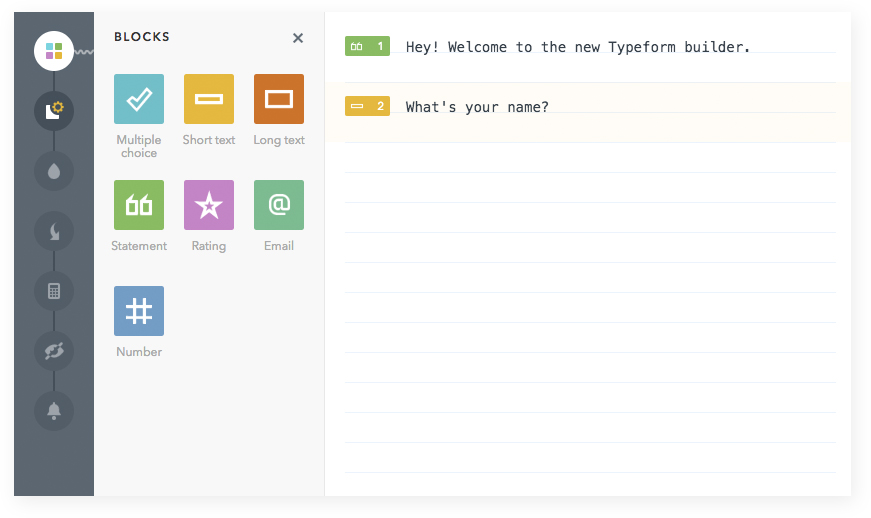
Another tool we’ve found incredibly useful is Typeform. It’s primarily known for being a survey tool, but it’s so much more than that for us. Typeform has been instrumental in creating engaging polls and quizzes. Its web-based software has this unique feature, which presents one question at a time, which makes the surveys more engaging and significantly increases completion rates.
For our L&D team, Typeform has been a real asset. The wide variety of templates it offers has sped up our process of creating polls and quizzes. This is crucial for us because it allows us to quickly gather feedback and assess the effectiveness of our training programs.
Moreover, Typeform’s ability to integrate with a multitude of tools we already use, such as Google Forms, Slack, and Asana, has streamlined our workflows. This integration means we can easily incorporate feedback mechanisms into our existing systems without any hassle.
7. Descript
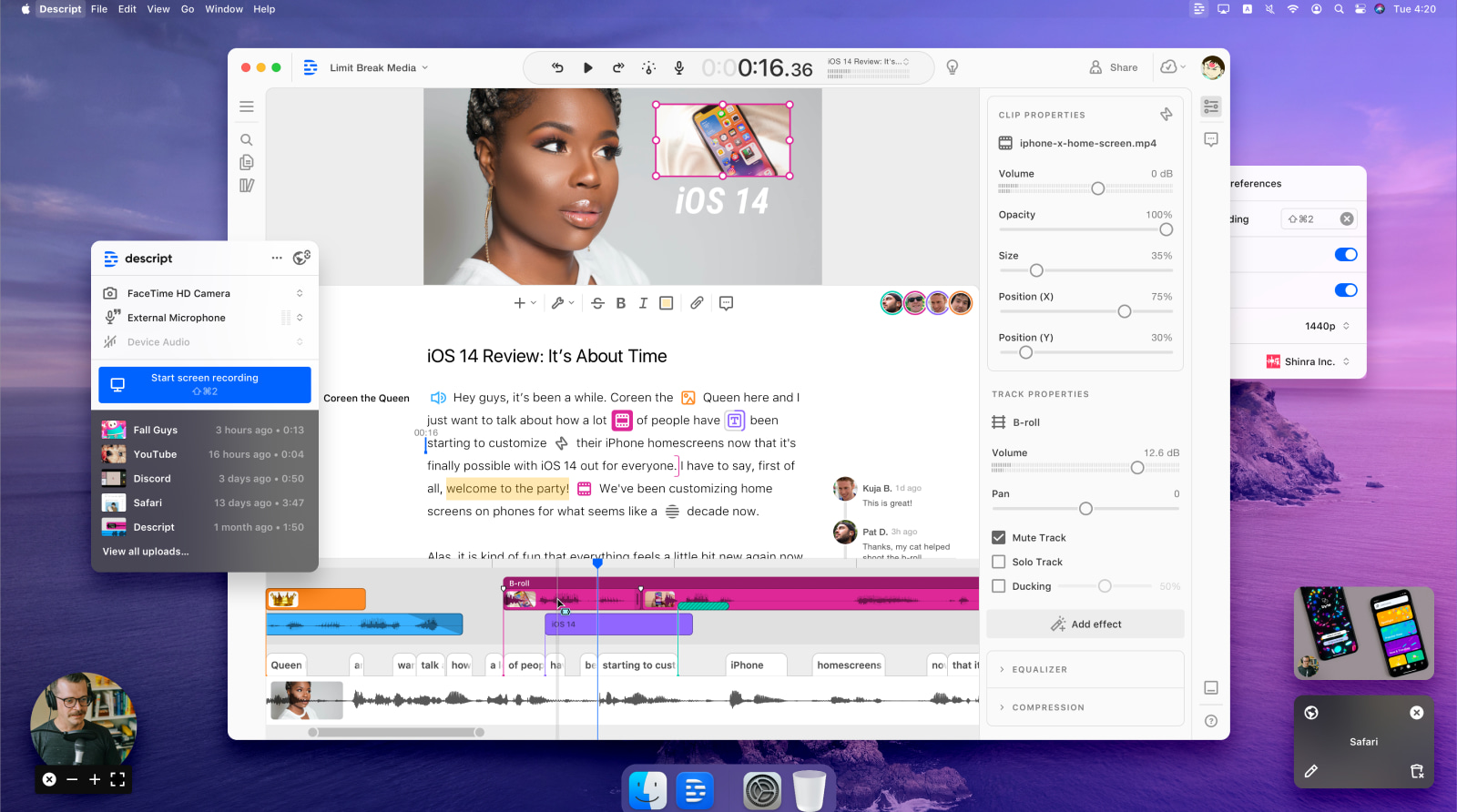
The last tool on our list that has significantly impacted our work is Descript. This web-based platform is a comprehensive solution for transcription, as well as audio and video editing. The platform transcribes videos and audio into text documents, allowing us to edit content by simply editing the text. This method is much more intuitive than traditional timeline editing and saves us a considerable amount of time.
One feature we particularly appreciate is the Filler Word Removal tool. It automatically identifies and removes unnecessary filler words like “ums” and “uhs,” ensuring our content is clear and professional with just a click. This tool alone has dramatically improved the quality of our audio and video materials.
Descript’s live collaboration feature has been a game-changer. It allows multiple team members to edit or comment on a file simultaneously. This has facilitated a more dynamic and efficient workflow, enabling us to produce high-quality learning materials faster.
Get Free eLearning Authoring Software — All Features, Forever.
We've helped 567 companies train 200,000+ employees. Create courses in under a minute with our AI LMS or use 200+ ready-made courses on compliance, harassment, DEI, onboarding, and more!
How to Create Interactive eLearning Programs
Keeping eLearning courses engaging can be tough, but here’s how we’ve found success at our organization, along with some fresh ideas I’ve discovered:
Our Winning Strategies:
- Variety is Key: We don’t rely on one format – we mix things up with text, audio, video, infographics, and even interactive simulations. This caters to different learning styles and keeps things interesting.
- Personalized Learning Paths: One size doesn’t fit all! We use pre-assessments to gauge prior knowledge and tailor the learning journey for each individual.
This ensures learners aren’t bogged down with information they already know or are frustrated by gaps in their understanding.
Want to know how online assessments help in creating learning pathways? Read this blog!
Learning doesn’t have to be a solitary experience. Incorporate discussion forums, group projects, and even live chat sessions to encourage collaboration and knowledge sharing among learners.
Some Bonus Tips that Work!
- Learner-Driven Storytelling: A discussion at Stanford on storytelling revealed that when statistics are woven into narratives, people are 22 times more likely to remember them compared to raw data.
Instead of traditional lectures, we use storytelling elements to make interactive eLearning courses. This could involve creating a narrative where learners make choices that influence the story’s outcome or using case studies with real-world scenarios.
- Micro-challenges with Gamification: Break down complex skills into smaller, achievable micro-challenges. Think “fix this bug in 3 minutes” or “complete this customer service interaction with a perfect score.”
Gamifying these challenges with points, badges, and leaderboards adds a fun layer of competition and motivates learners to keep going. - Curated Content Feeds: Information overload is a real problem. In the U.S., 76% of workers feel that information overload contributes to their daily stress, and 35% say it negatively affects their work performance.
We use AI to create personalized content feeds for learners to suggest relevant articles, videos, and interactive elements based on their progress and interests. This keeps the learning experience dynamic and ensures they’re exposed to the most valuable content for their needs.
Remember, variety is key. Don’t rely on just one or two strategies. Mix and match different approaches to keep your learners engaged throughout the course.
Best Practices for Implementing Interactive Online Learning
Here’s some proven strategies for impactful and interactive eLearning sessions that keep participants engaged and coming back for more:
- Shorter Sessions (30-45 minutes): Fight attention fatigue with focused, bite-sized learning chunks.
- Interactive Activities: Incorporate polls, quizzes, and discussions to engage learners actively.
- Variety is the Spice: Mix lectures, demonstrations, and breakout sessions to cater to different learning styles.
- Community Building: Foster interaction and a sense of belonging among learners for a more enriching experience.
- Clear and Concise Content: Present information in a straightforward, easy-to-understand manner.
- Make Responsive Courses: Your eLearning training programs should be responsive so that they can be easily browsed across all devices.
- Accessibility for All: Ensure learning materials are accessible to everyone, including those with disabilities.
- Regular Breaks: Schedule short breaks in longer sessions to prevent information overload.
- Feedback Matters: Provide opportunities for immediate feedback to help learners gauge their progress.
- Tech Troubleshooter: Have a plan to address technical issues and minimize disruptions.
By following these practices, you can create online interactive eLearning that is focused, engaging, and accessible to all participants.
Ready to Boost Employee Engagement with Interactive eLearning?
Don’t let boring lectures and outdated training materials drag your employees down.
Interactive eLearning is a powerful tool that can revolutionize the way your team learns and retains information.
Take action today!
Here are some next steps to get you started:
- Explore the interactive eLearning tools mentioned in this post. Many of them offer free trials, so you can test them out before you buy.
- Start brainstorming ideas for incorporating interactive elements into your existing training programs.
- Get your team involved! Ask your employees for their input on what types of training would be most beneficial and engaging for them.
By investing in interactive eLearning, you’re investing in the future of your organization. With a more skilled and engaged workforce, you’ll be well on your way to achieving your business goals.
 Tips
Tips
We’d love to hear your tips & suggestions on this article!
Get Free eLearning Authoring Software — All Features, Forever.
We've helped 567 companies train 200,000+ employees. Create courses in under a minute with our AI LMS or use 200+ ready-made courses on compliance, harassment, DEI, onboarding, and more!

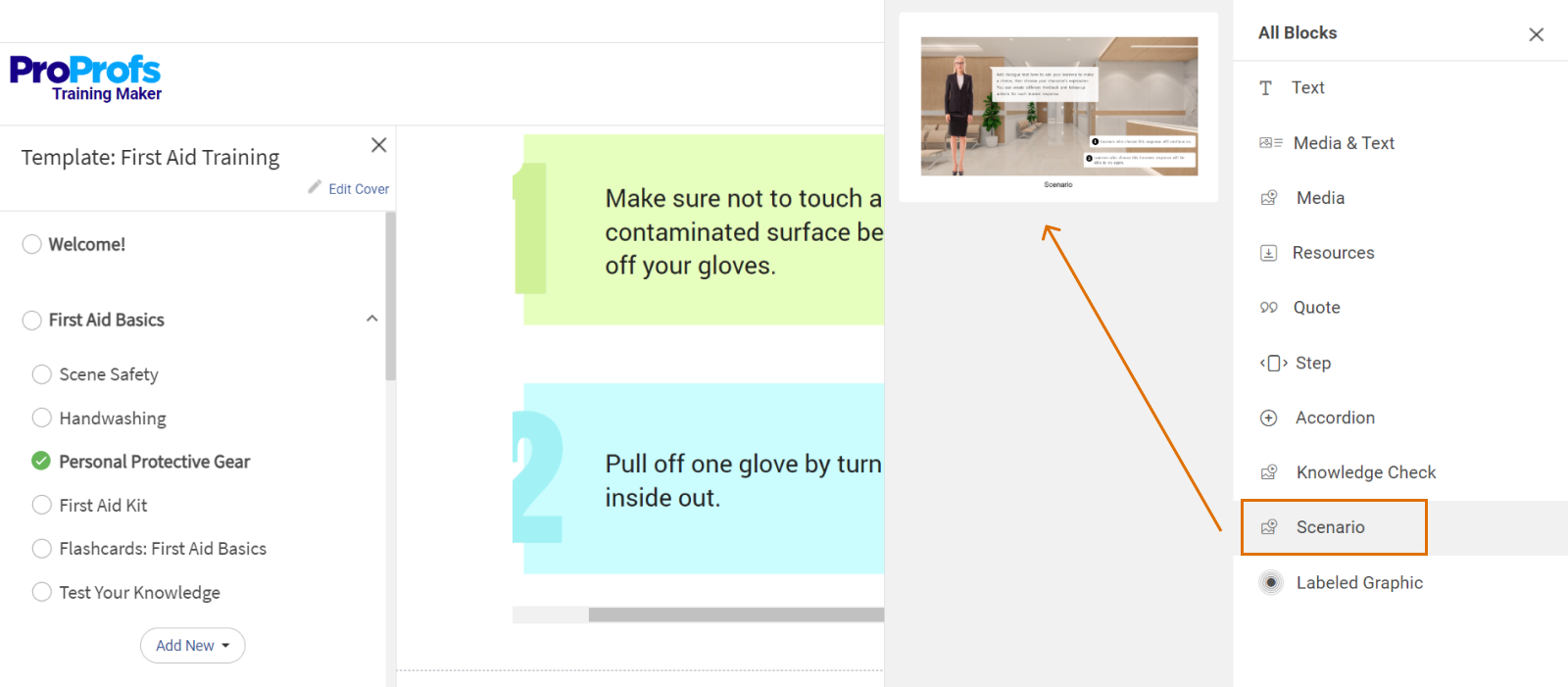

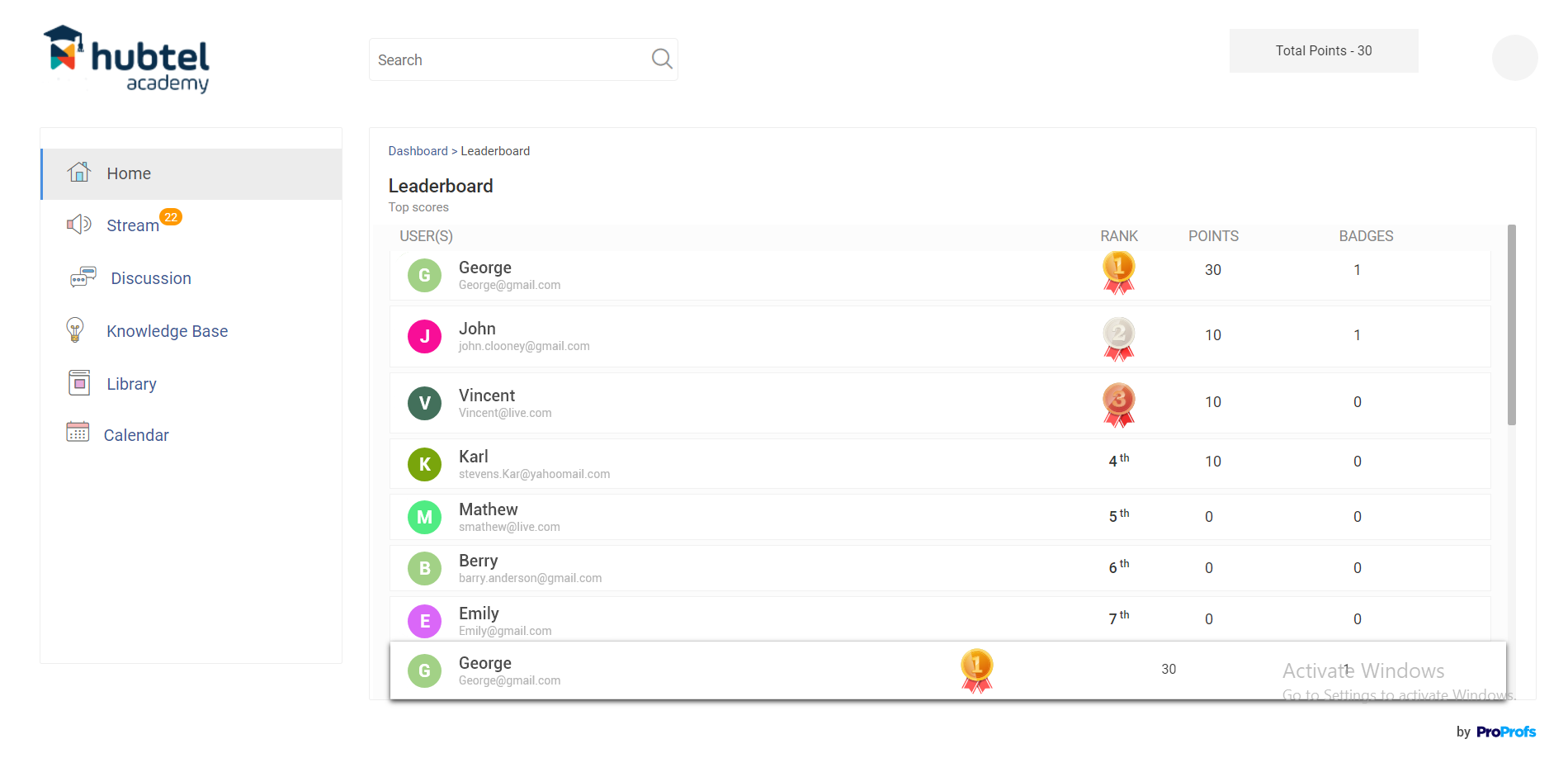
 We'd love your feedback!
We'd love your feedback! Thanks for your feedback!
Thanks for your feedback!







